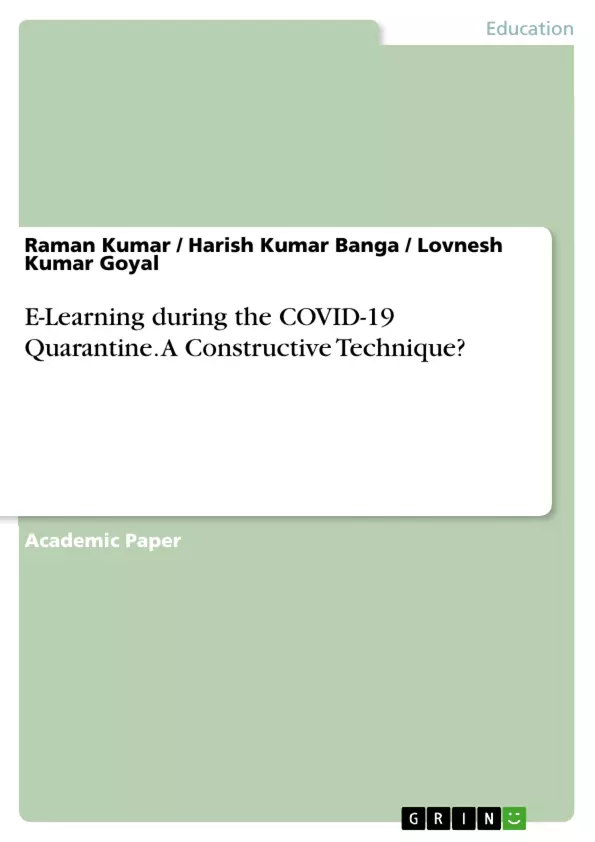This paper discusses E-learning as a new way of education during the lockdown of COVID-19 pandemic.
The crisis caused by the lockdown has cast its shadow on the education system. Coronavirus has altered the lives of all persons. But, time to look at the positives. The most crucial human development oft the kids is related to the special e-technology adopted during this lockdown period. The modern learning technique, which is already increasing at all levels of education, is an alternative training method to a physical classroom model that employs a comprehensive set of applications and processes.
Inhaltsverzeichnis (Table of Contents)
- Introduction
- Electronic Learning
- Asynchronous E-Learning
- Synchronous E-Learning
- Blended E-Learning
- Benefits and Drawbacks of E-Learning
- E-Learning Platforms for Online Courses
- Comparison of E-Learning Tools
Zielsetzung und Themenschwerpunkte (Objectives and Key Themes)
This chapter discusses the concept of e-learning, its types, advantages, limitations, and devices. It examines the impact of COVID-19 on education and the shift towards technology-based pedagogy. The chapter also provides an overview of various e-learning platforms and their features, highlighting the significance of e-learning in the current educational landscape.
- Impact of COVID-19 on Education
- Shift towards Technology-Based Pedagogy
- E-Learning as an Alternative to Traditional Classroom Education
- Advantages and Limitations of E-Learning
- Various E-Learning Platforms and their Features
Zusammenfassung der Kapitel (Chapter Summaries)
The chapter begins by introducing the concept of e-learning, its history, and its evolution. It emphasizes the importance of e-learning in the context of the COVID-19 pandemic and discusses the various types of e-learning, including asynchronous, synchronous, and blended learning. The chapter then delves into the advantages and drawbacks of e-learning, outlining the benefits of flexible learning and cost-saving measures while acknowledging potential limitations like self-discipline and lack of flexibility.
The chapter subsequently explores various popular e-learning platforms, including Udemy, Teachable, WizIQ, Ruzuku, Educadium, Learn Worlds, Thinkific, Academy of Mine, CourseCraft, BYJU'S, Dexler Education, and Educomp Solutions. A comparison of these platforms is presented, highlighting their user base, interface, course delivery methods, and features.
Schlüsselwörter (Keywords)
The main keywords and focus topics of the text are: E-Learning, Lockdown, COVID-19, Learning Platforms, Quarantine, Asynchronous, Synchronous, Blended, Advantages, Drawbacks, Udemy, Teachable, WizIQ, Ruzuku, Educadium, Learn Worlds, Thinkific, Academy of Mine, CourseCraft, BYJU'S, Dexler Education, Educomp Solutions.
- Arbeit zitieren
- Raman Kumar (Autor:in), Ph.D Harish Kumar Banga (Autor:in), Lovnesh Kumar Goyal (Autor:in), 2021, E-Learning during the COVID-19 Quarantine. A Constructive Technique?, München, GRIN Verlag, https://www.grin.com/document/1022314



